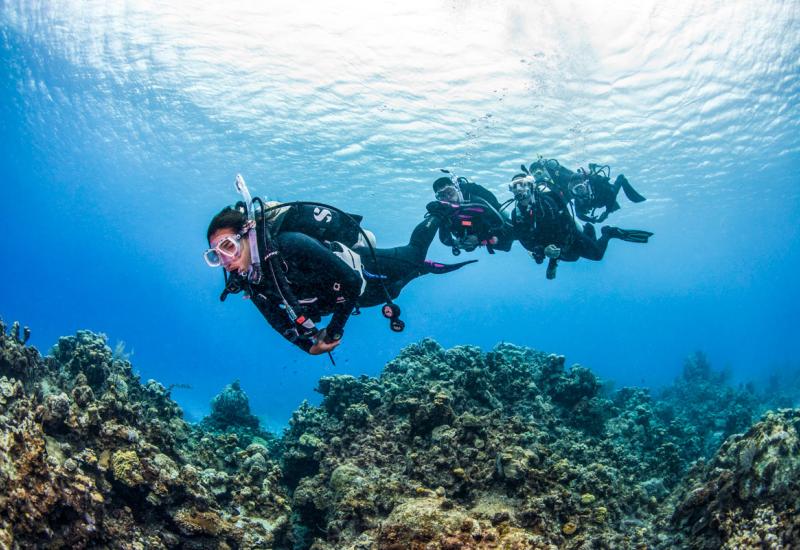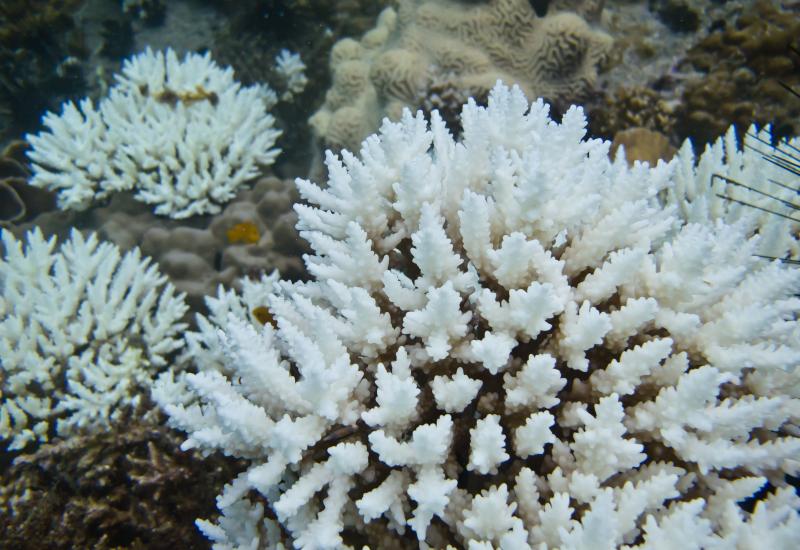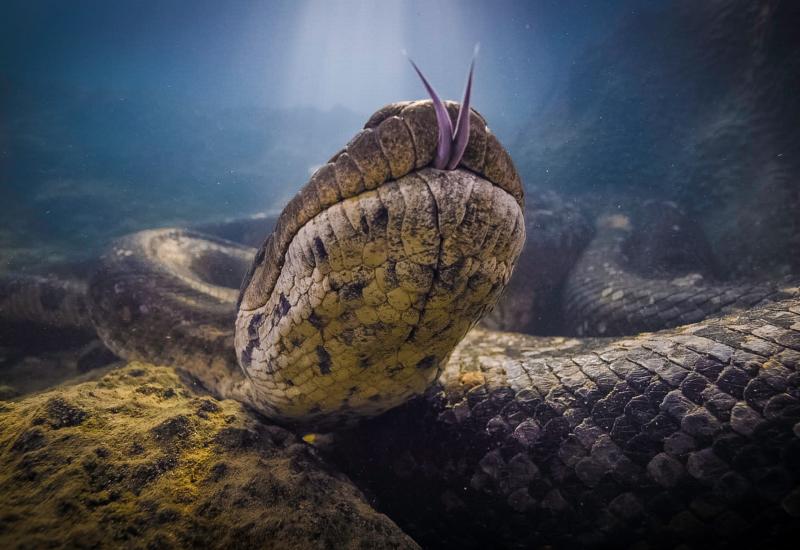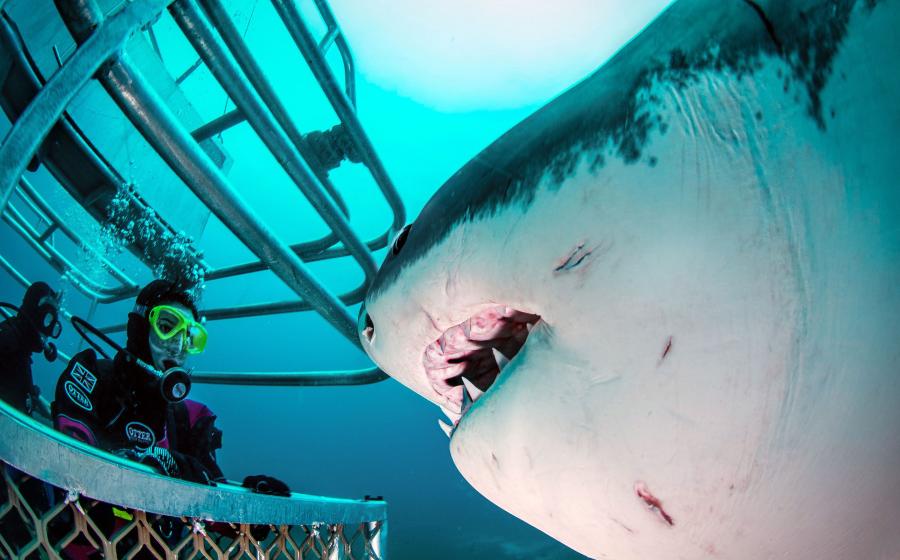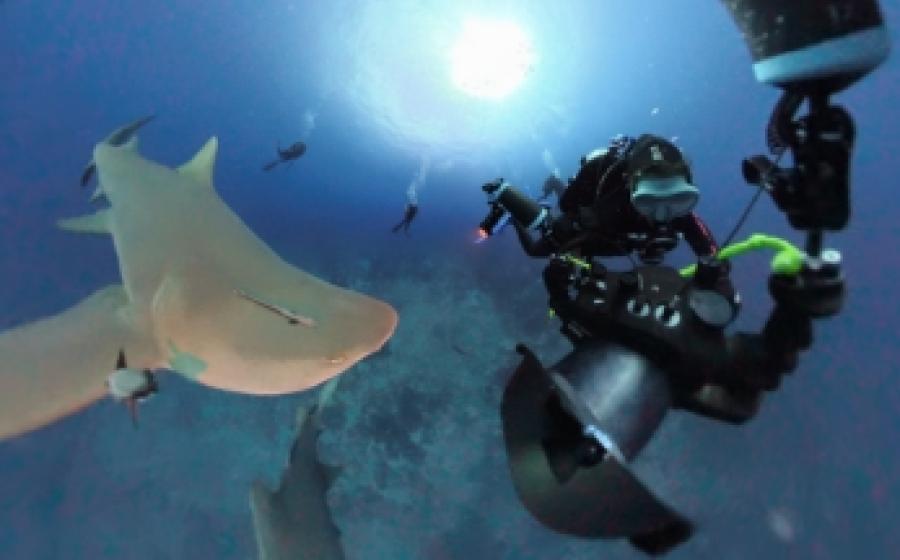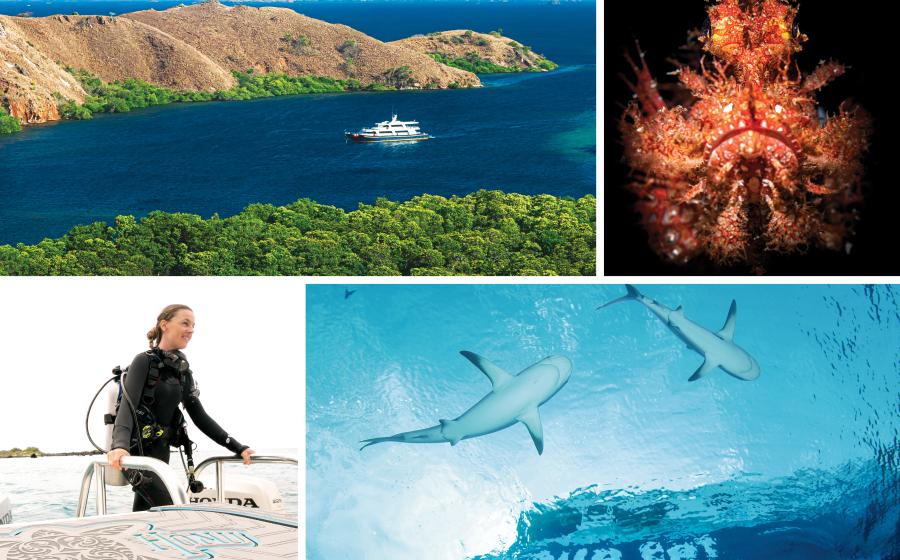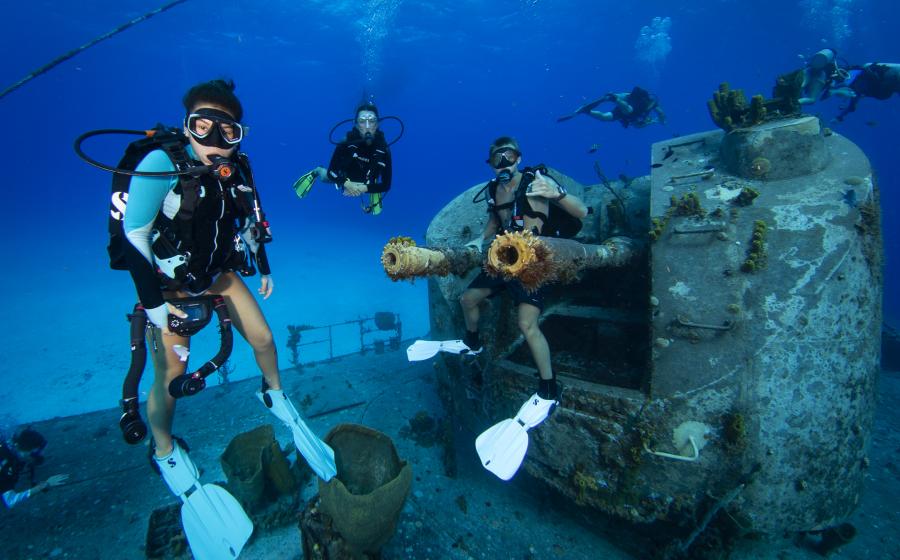University of Miami Launches Digital Atlas of Marine Species and Locations (DAMSL)
FT. LAUDERDALE, Fla. – November 12, 2009 -- The University of Miami’s Rosenstiel School of Marine and Atmospheric Science is launching a first-of-its-kind interactive database, the Digital Atlas of Marine Species and Locations (DAMSL), which visually catalogs marine life while providing encyclopedic content to users. The site located at www.damsl.org will officially be unveiled at the National Science Teacher’s Association Conference taking place November 12 – 14 at the Broward County Convention Center. The images, taken over more than four decades, document photographer Myron Wang’s passion for the ocean and its denizens. Wang and his wife and dive partner/videographer Nicole, have spent years photographing marine life and teaching underwater photography. The couple donated their extensive collection of more than 5,000 images of fish, corals, invertebrates and other marine life to the Rosenstiel School. They conveyed their vision to create a way to share these photos in such a manner that will educate and inspire the general public about the rich underwater ecosystems that exist worldwide. “We are delighted to have this stunning catalog of images as an educational resource for all ages and backgrounds, as an additional resource for community education and outreach,” said Dr. Roni Avissar, professor and dean of the Rosenstiel School. Through several years of collaboration with Dr. John Gifford, associate professor of Marine Affairs and Policy at the Rosenstiel School and with the help of several graduate students, Wang’s catalog of images has been transformed into a navigable Web tool for students, teachers and everyone interested in learning about the diversity of marine life. “What we’ve accomplished together over the past three years of development illustrates a perfect merging of photographic art, computer programming and scientific knowledge to create a valuable online resource,” said Gifford who is a marine archaeologist and GIS specialist. Using Google Earth satellite imagery, in combination with the Wangs’ photos, DAMSL users see images of indigenous species as they run their computer mouse over different locations on the globe. From their desks students in the United States will be able to experience far-away locations such as the Seychelles, the Great Barrier Reef, Truk Lagoon and the Red Sea, among others. “We have been very fortunate to travel around the world to dive and photograph in some of the most exotic and remote reefs on the planet," said Myron Wang. "It is a wonderful opportunity to be working with the Rosenstiel School, arguably one of the best marine schools in the nation, if not the world, to make this important resource accessible to the general public, in the hopes of inspiring future generations of divers, marine researchers, environmentalist and ocean ecologists." Approximately 1,000 of the images are currently available online. Users may search the DAMSL database by geographic location or by type of marine life. Each search will yield a thumbnail image with information on the marine life depicted, including scientific name, common name, kingdom, class, family, genus and species, the date collected and geographic data. The DAMSL database is intended to serve as a free educational tool for students and educators of all levels, divers and snorkelers, and other members of the community interested in marine life and geography. Prior to the Web launch, the Rosenstiel School invited high school students from MAST Academy (Miami) and St. Thomas Aquinas (Ft. Lauderdale) to test the DAMSL application. Teachers and students found this new method for studying marine life a refreshing change from learning though traditional textbooks. In addition, the students were thrilled to discover unique creatures in regions to which they may never have traveled. In time, Wang’s photographs will be available for purchase and use through an online image bank at www.damsl.org. Proceeds from the image bank will fund the maintenance and software updates needed to sustain DAMSL as a free, educational resource.
FT. LAUDERDALE, Fla. – November 12, 2009 -- The University of Miami’s Rosenstiel School of Marine and Atmospheric Science is launching a first-of-its-kind interactive database, the Digital Atlas of Marine Species and Locations (DAMSL), which visually catalogs marine life while providing encyclopedic content to users. The site located at www.damsl.org will officially be unveiled at the National Science Teacher’s Association Conference taking place November 12 – 14 at the Broward County Convention Center. The images, taken over more than four decades, document photographer Myron Wang’s passion for the ocean and its denizens. Wang and his wife and dive partner/videographer Nicole, have spent years photographing marine life and teaching underwater photography. The couple donated their extensive collection of more than 5,000 images of fish, corals, invertebrates and other marine life to the Rosenstiel School. They conveyed their vision to create a way to share these photos in such a manner that will educate and inspire the general public about the rich underwater ecosystems that exist worldwide. “We are delighted to have this stunning catalog of images as an educational resource for all ages and backgrounds, as an additional resource for community education and outreach,” said Dr. Roni Avissar, professor and dean of the Rosenstiel School. Through several years of collaboration with Dr. John Gifford, associate professor of Marine Affairs and Policy at the Rosenstiel School and with the help of several graduate students, Wang’s catalog of images has been transformed into a navigable Web tool for students, teachers and everyone interested in learning about the diversity of marine life. “What we’ve accomplished together over the past three years of development illustrates a perfect merging of photographic art, computer programming and scientific knowledge to create a valuable online resource,” said Gifford who is a marine archaeologist and GIS specialist. Using Google Earth satellite imagery, in combination with the Wangs’ photos, DAMSL users see images of indigenous species as they run their computer mouse over different locations on the globe. From their desks students in the United States will be able to experience far-away locations such as the Seychelles, the Great Barrier Reef, Truk Lagoon and the Red Sea, among others. “We have been very fortunate to travel around the world to dive and photograph in some of the most exotic and remote reefs on the planet," said Myron Wang. "It is a wonderful opportunity to be working with the Rosenstiel School, arguably one of the best marine schools in the nation, if not the world, to make this important resource accessible to the general public, in the hopes of inspiring future generations of divers, marine researchers, environmentalist and ocean ecologists." Approximately 1,000 of the images are currently available online. Users may search the DAMSL database by geographic location or by type of marine life. Each search will yield a thumbnail image with information on the marine life depicted, including scientific name, common name, kingdom, class, family, genus and species, the date collected and geographic data. The DAMSL database is intended to serve as a free educational tool for students and educators of all levels, divers and snorkelers, and other members of the community interested in marine life and geography. Prior to the Web launch, the Rosenstiel School invited high school students from MAST Academy (Miami) and St. Thomas Aquinas (Ft. Lauderdale) to test the DAMSL application. Teachers and students found this new method for studying marine life a refreshing change from learning though traditional textbooks. In addition, the students were thrilled to discover unique creatures in regions to which they may never have traveled. In time, Wang’s photographs will be available for purchase and use through an online image bank at www.damsl.org. Proceeds from the image bank will fund the maintenance and software updates needed to sustain DAMSL as a free, educational resource.


